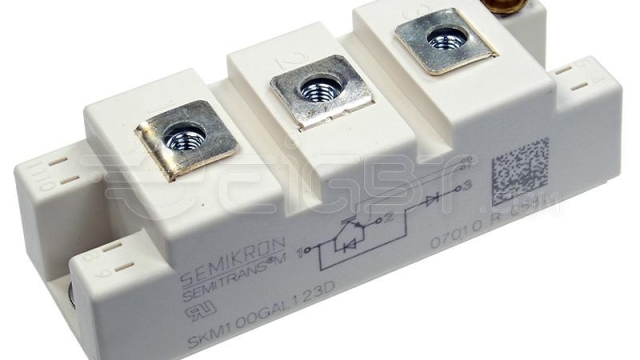
Welcome to the exciting realm of IGBT modules, where cutting-edge technology meets unparalleled power and efficiency. In today’s fast-paced world, innovation in electronics is key, and IGBT modules stand at the forefront with their ability to handle high power levels within a compact design. These modules have rapidly become indispensable components in a wide range of applications, from renewable energy systems to industrial drives and electric vehicles. With their unique combination of high-current handling capability and fast switching speeds, IGBT modules are transforming the way we harness and control electrical power.
Understanding IGBT Technology
In the realm of power electronics, Insulated Gate Bipolar Transistor (IGBT) modules are crucial components. Combining the advantages of MOSFETs and BJTs, IGBT technology is known for its high efficiency and switching speed.
IGBT modules consist of multiple IGBTs connected in a single package, along with diodes for freewheeling current. These modules are widely used in various applications such as motor control, power supplies, renewable energy systems, and electric vehicles. It’s vital to comprehend how IGBT technology functions in these diverse settings.
One key aspect of IGBT technology is its ability to handle high voltages and currents. By controlling the gate signal, IGBT modules can efficiently regulate the flow of power in a circuit, making them indispensable in modern power electronics designs.
Applications of IGBT Modules
In the realm of renewable energy, IGBT modules play a crucial role in regulating the power flow from sources such as solar panels and wind turbines. Their ability to switch high voltages at rapid speeds makes them ideal for applications like solar inverters and grid-tied systems, ensuring efficient energy conversion.
The automotive industry benefits greatly from IGBT modules in electric and hybrid vehicles. These modules enable precise control over motor speed and torque, enhancing vehicle performance while also contributing to energy savings. Additionally, IGBT modules are used in charging stations to efficiently manage the flow of electricity during the charging process.
IGBT modules are also extensively utilized in industrial machinery and power electronics. From welding equipment to high-power drives in manufacturing plants, these modules provide the necessary power conversion capabilities to drive various operations smoothly and reliably. Their robust design and high efficiency make them indispensable components in modern industrial applications.
Advantages and Limitations
Advantages of IGBT Module:
- Power Efficiency: IGBT modules offer high power efficiency, making them ideal for various applications requiring precise power control.
- High Voltage Capability: These modules can handle high voltages, making them suitable for power electronics in industries like renewable energy and electric vehicles.
- Fast Switching Speed: IGBT modules have fast switching speeds, enabling quick response times in power conversion processes.
Limitations of IGBT Module:
- Heat Dissipation: One of the limitations of IGBT modules is heat dissipation, as they can generate significant heat during operation requiring proper cooling systems.
- Cost: The cost of IGBT modules can be relatively high compared to other power semiconductor devices, which can impact overall project budgets.
- Complex Drive Circuitry: IGBT modules require complex drive circuitry for proper operation, adding complexity to the design and implementation of systems utilizing them.
IGBT Module
